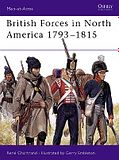A Mahratta Light Horseman
Some rough notes on using a Mahratta army in Command & Colours Napoleonics. I'm using the Battle of Assaye as my benchmark here and will work up a scenario shortly.
Notes on Company troops, etc to follow.
European Trained Troops (Core Troops)
This are chaps trained to fight in line in the European style, armed with flintlocks. Pohlmann's fellows and so forth.
Rate as Portuguese Line Infantry.
House Troops (Non-Core Troops)
Non-European trained troops, tradionally armed with matchlocks, spears, etc.
Rate as Spanish Line Infantry
Bargirs (Core Troops)
Heavily armoured Mahratta cavalry, paid for by the state.
Rate as Portuguese Light Cavalry.
Silladars (Non-Core Troops)
The common run of Mahratta horse, who provide their own horses and weapons. A step above Pindari.
Rate as understrength Portuguese Light Cavalry, two stands.
Pindari
Cossacks in turbans, lightly armed marauders, paid in plunder. Completely useless on the battlefield and used entirely for scouting. Underdoing something of a
rehabilitation apparently.
Not typically depicted on the tabletop.
Rocketeers (Non Core Troops)
I has originally thought to include these fellows as a type of artillery unit, but further reading would seem to indicate that they weren't that effective. However, it would be a crying shame to field a Mahratta army and not have rockets. Place a rocketeer figure with an artillery unit, the rocketeer may be activated and battle using the special rule outlined below. Rocketeers are subject to risk like leaders and are destroyed if the accompanying artillery unit is destroyed.
Arab Mercenaries (Core Troops)
Disorganised but brave, useful mainly for shock action.
Four strength Portuguese infantry unit. May move two and battle in melee. Battles with an additional die if full strength.
Artillery (Core Troops)
I'm in two minds about this, most sources describe the Mahratta artillery as very good. However, if they were as good as they were made out to be, it seems hard to understand how they could have lost at Assaye counting the massive superiority they enjoyed in guns. I must go back to my sources and do some playtesting. They don't appear to have been particularly mobile. Not sure about this one.
Rate as understrength Portuguese Foot Guns (two stands)
Leaders (Core Unit)
These work just like any other armies leaders. I am sorely tempted by a Pohlman on an elephant though, a Scindia too. Not least a suitably dastardly looking Tiger of Mysore.
Special Rules
Core & Non Core units.
Having read over my Jac Weller, "Wellington in India", Byron Farrell et al, Mahratta armies never really seemed to be in danger unless the high social status or European trained troops started dying or running. The peons could be driven from the field and no-one, least of all their own commanders seemed to expect anything less. Consequently, the Mahratta army is divided into Core and Non-Core units.
Core units count for flags, None-Core do not.
Shakey Morale
When two non-core units have been destroyed, the owning player must remove a third non-core unit. Where a non-core unit is adjacent to an enemy unit, it must be removed for preference.
Rocket Strike
Play any card to make a 2 dice attack on two adjacent hexes with six hexes of the rocket unit. The card has no effect other than making the attack.
"An ee's generally shammin' when ee's dead"
Play one tactics card to replace an artillery casualty marker in an unoccupied hex (i.e. a dead artillery unit) with a fresh unit, which is now activated. The dead unit still counts for flags.The card has no effect other than making the attack.
Numbers
The troops described here probably seem very weak, but I anticipate fielding them in very large numbers. A Company army of 12-14 units, should be facing a Mahratta force of 18-30 units.





















































